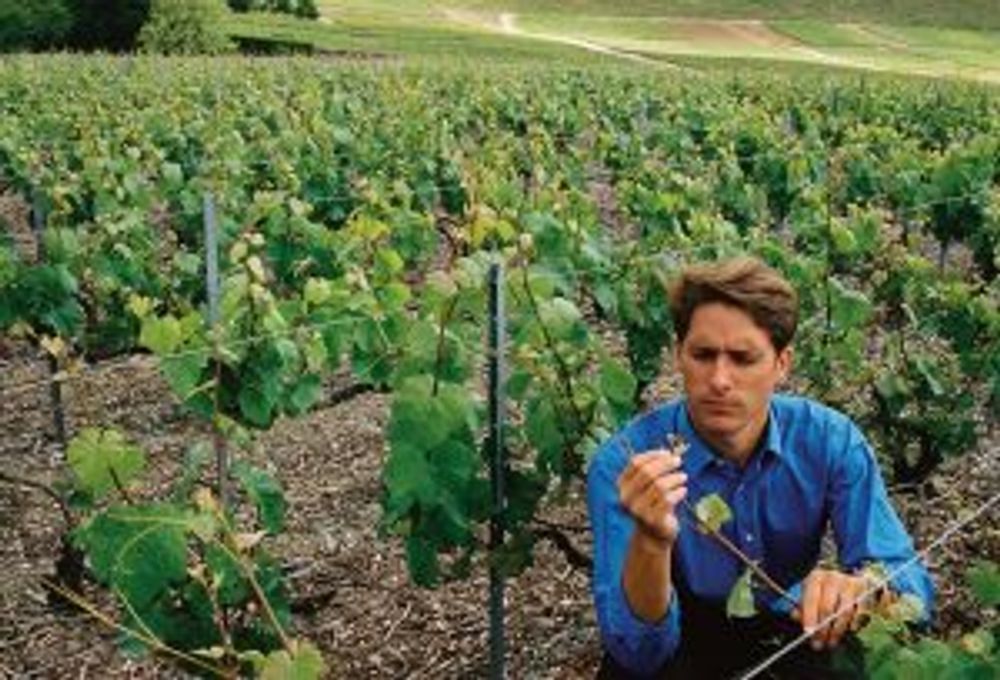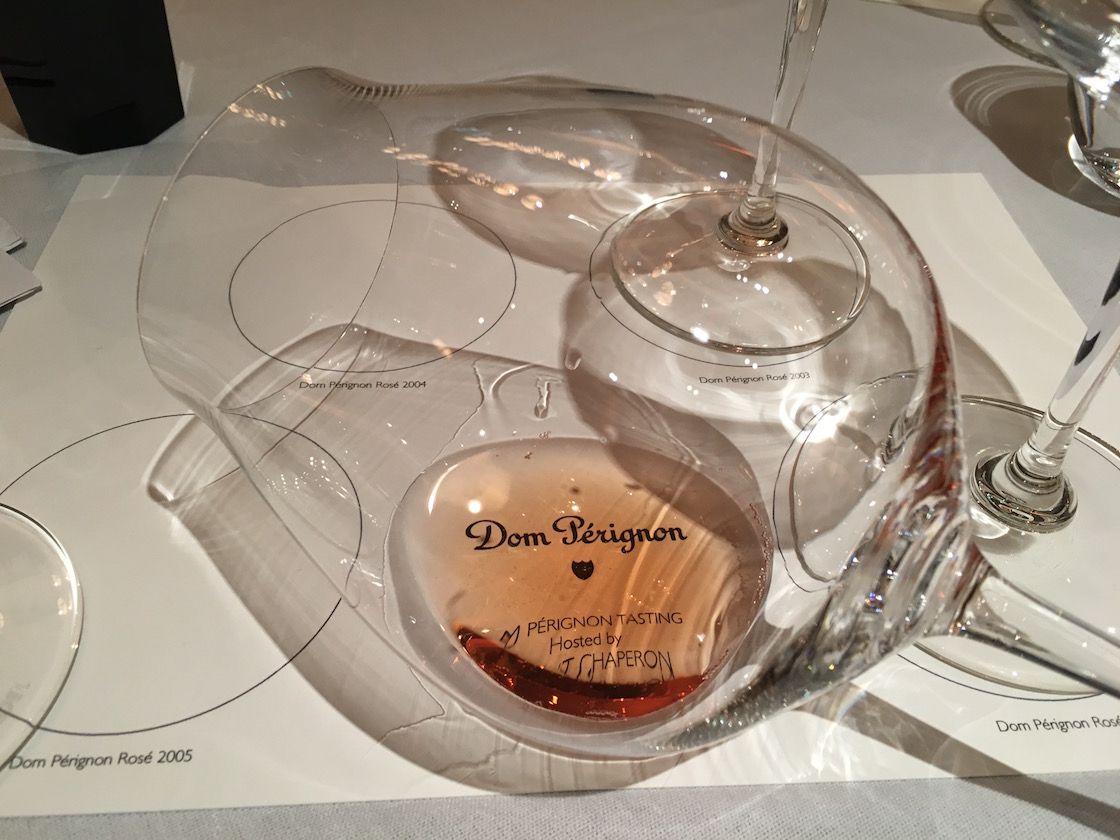Vincent Chaperon, oenologist at Dom Pérignon, was in London to present the new Dom Pérignon Rosé 2005 vintage which will be released in the UK in early 2017.
In order to put this new wine into context, it was served alongside the previous vintages 2004, 2003 and 2002.
“It’s not often that we have the chance to compare Dom Pérignon Rosé, especially from a decade when the weather was so friendly and warmer than in the past,” Chaperon said and outlined the particular importance of Pinot Noir for these vintage cuvées.

Vincent Chaperon. 2005 posed a key decision on when to pick the Pinot Noir.
“There is only one Dom Pérignon and the philosophy is the same for all our wines. We have the same principles and we are applying them to both Dom Pérignon blanc and rosé.
“All Dom Pérignon is made from Pinot Noir and Chardonnay and our commitment is to show the perfect balance between their expressions. For Rosé, however, there is this third part,” explains Chaperon and refers to the portion of Pinot Noir that is vinified as a red wine and used to give the most beautiful pink hue to the Champagnes.
“It’s a change and an opportunity to push the envelope of Pinot Noir. The Pinot Noir has to push Dom Pérignon Rosé to a new frontier – we have to push both the harmony and the Pinot Noir.”
The Pinot Noir that makes the red wines is sourced from “dedicated” red wine vineyards in three villages in the main: Hautvillers, Aÿ and Bouzy – rarely from Verzenay.
Aÿ –with its south-facing slopes – is used most frequently.

The November 23 London press launch of Dom Pérignon Rosé 2005. Vincent Chaperon (third from left) explains the Dom Pérignon philosophy.
“We need to reach phenolic maturity for Pinot Noir, for its colour, and we reach that in Aÿ. All the decisions we take for making red wine are different,” says Chaperon about growing the Pinot Noir grapes that are destined to become red blending base wine rather than white base wine for Champagne.
While he acknowledges that the protocols are almost ‘Burgundian’, like fermenting the wines on their skins in open cuves and performing pigeage, he points out that maceration on the skins may only last three to four days and that the Pinot Noir for this red wine is usually harvested at 11 to 11.5 degrees potential alcohol.
“That is high for Champagne but very low for Burgundy,” Chaperon emphasises.
“We want to extract the essence and personality of Pinot Noir but we don’t want to take it too far. Using it as a red wine just adds another facet of Pinot, it’s a double movement, extracting on the one hand but never forgetting that we have to integrate all of this later.”
While 2005 is generally held to be a great vintage across France, Chaperon acknowledges that Champagne benefitted from the warm season as much as other regions but had to contend with September rain which brought on huge disease pressure for botrytis rot.

The decision in 2005 was to either pick early and lose potential grape quality or to pick later and lose potential yield. He and Dom Pérignon chef de cave, Richard Geoffrey, decided to do the latter and had to sacrifice a lot of yield by sorting, but ended up with great Pinot Noir.
The Dom Pérignon Rosé of 2005 contains 27% of red Pinot Noir of a total of 55%. In contrast, Dom Pérignon Rosé 2004, a much cooler year, contains 29% of red Pinot Noir of a total of 65%.
In the very warm year of 2003 the proportions change completely with just 20% of red Pinot of a total of 30% with the remaining 70% all made up by Chardonnay.
Chaperon is at pains to emphasise that there is no recipe – but a vision instead.
“We have been on a trajectory since 1959 [when the first Dom Pérignon Rosé was made]. The vision and philosophy are the only stable things, everything else is moving. Techniques are changing, vineyards are changing, climate is changing and we reinvent ourselves to be more and more precise in our vision.

“We like to say that Dom Pérignon is the sum of all the vintages we have released. Every new vintage is a new facet of Dom Pérignon – they all share the same DNA. Dom Pérignon is a project in progress, it’s on-going. The vision is to use the vintage year to incarnate what we are pursuing: harmony, balance, finesse, tactile expression and seamlessness.”
All the vintages are exquisitely creamy: 2005 is firm, rounded and powerful, still not expressing itself fully. The 2004 is fragrant and taut: the scent of redcurrant hovers above a compact and very youthful body. 2003 is both creamy and dreamy, almost balm-like with its soft mousse. 2002 is –unexpectedly– more advanced but shows beguiling hints of white truffle in red berry fruit – if you cannot wait for the release of the 2005 this is the one to drink.










































